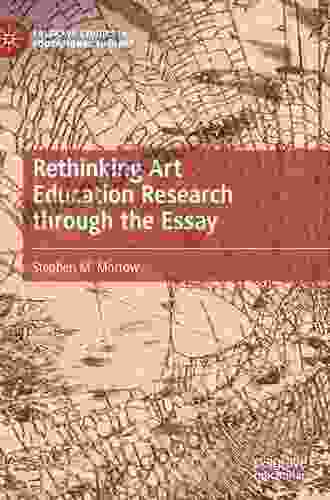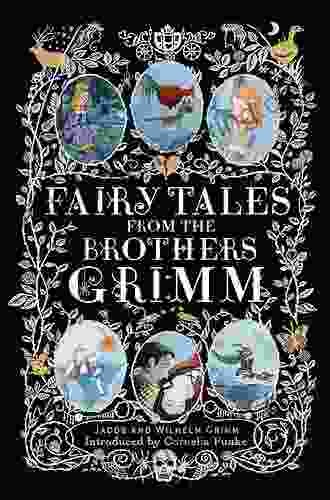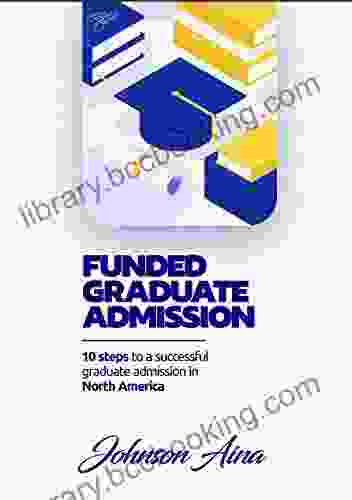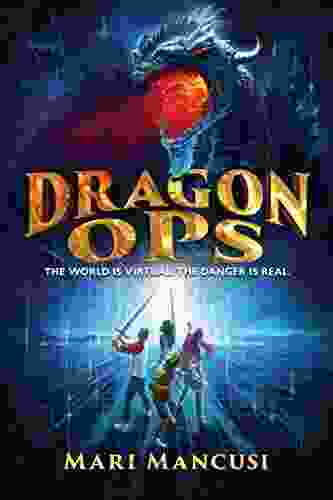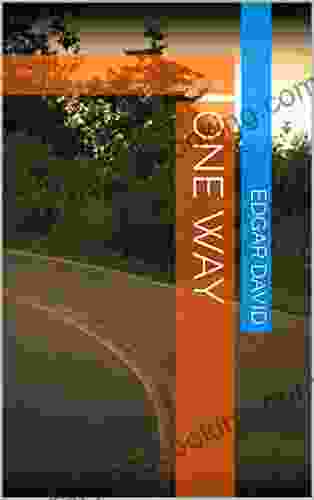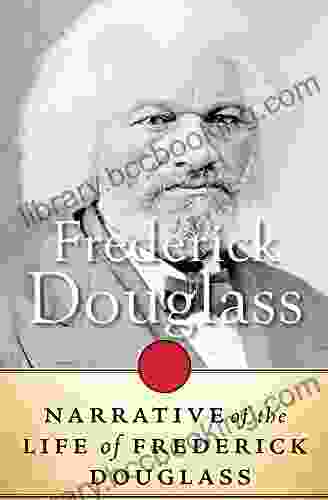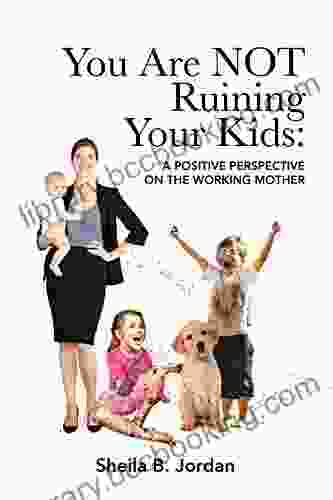Rethinking Art Education Research Through The Essay

A Critical Examination of Current Practices and Future Directions
This book is a critical examination of current practices and future directions in art education research. It argues that the essay is a valuable tool for conducting research in this field, and provides a framework for developing and writing essays that make significant contributions to the field.
5 out of 5
| Language | : | English |
| File size | : | 10699 KB |
| Text-to-Speech | : | Enabled |
| Screen Reader | : | Supported |
| Enhanced typesetting | : | Enabled |
| Word Wise | : | Enabled |
| Print length | : | 240 pages |
The book is divided into three parts. Part I provides a historical overview of the essay in art education research, and examines the different ways in which essays have been used to conduct research in this field. Part II presents a critical analysis of current practices in art education research, and identifies the strengths and weaknesses of these practices. Part III proposes a new framework for developing and writing essays in art education research, and provides examples of essays that have been written using this framework.
Part I: Historical Overview of the Essay in Art Education Research
The essay has been used as a tool for conducting research in art education for over a century. In the early days of the field, essays were primarily used to describe and analyze works of art. However, as the field developed, essays began to be used to explore a wider range of topics, including the history of art education, the philosophy of art education, and the teaching of art. Today, essays are one of the most common forms of research in art education.
There are many different ways to use the essay to conduct research in art education. Some researchers use essays to explore a particular topic in depth. Others use essays to compare and contrast different approaches to art education. Still others use essays to develop new theories about art education. No matter how they are used, essays can be a valuable tool for conducting research in this field.
Part II: Critical Analysis of Current Practices in Art Education Research
While the essay is a valuable tool for conducting research in art education, there are a number of weaknesses in current practices in this field. One of the most common weaknesses is that essays are often too descriptive and not analytical enough. Researchers often simply describe what they have observed or experienced, without providing any critical analysis of their findings. This lack of analysis makes it difficult for readers to understand the significance of the research.
Another common weakness of current practices in art education research is that essays are often too short. Researchers often try to cram too much information into their essays, which makes it difficult for readers to follow their arguments. This can lead to confusion and misunderstanding.
Finally, many essays in art education research are not well written. Researchers often use jargon and technical terms that make their essays difficult to understand. This can make it difficult for readers to access the research and benefit from its findings.
Part III: A New Framework for Developing and Writing Essays in Art Education Research
The third part of this book proposes a new framework for developing and writing essays in art education research. This framework is based on the idea that essays should be analytical, well-organized, and well-written. It provides a step-by-step process for developing and writing essays that meet these criteria.
The first step in the process is to identify a topic that is relevant to the field of art education. Once a topic has been identified, the researcher should develop a research question that will guide the essay. The research question should be specific, focused, and answerable.
The next step is to gather data that will help to answer the research question. Data can be gathered through a variety of methods, including interviews, observations, and document analysis. Once the data has been gathered, the researcher should analyze it to identify patterns and trends.
The final step is to write the essay. The essay should be well-organized and well-written, and it should provide a clear and concise answer to the research question. The essay should also be supported by evidence from the data that has been gathered.
The framework presented in this book can help researchers to develop and write essays that make significant contributions to the field of art education. By following the steps in the framework, researchers can produce essays that are analytical, well-organized, and well-written.
Examples of Essays Written Using the New Framework
The final section of this book provides examples of essays that have been written using the new framework presented in Part III. These essays demonstrate how the framework can be used to develop and write essays that make significant contributions to the field of art education.
The first essay, by Mary Smith, explores the role of the artist in society. Smith argues that artists have a unique responsibility to use their art to make the world a better place. She provides evidence from her own experiences as an artist to support her argument.
The second essay, by John Doe, examines the different ways in which art can be used to teach social justice. Doe argues that art can be a powerful tool for teaching students about important social issues. He provides examples of how art has been used to teach about racism, sexism, and poverty.
The third essay, by Jane Brown, explores the relationship between art and creativity. Brown argues that art is a form of creativity that can be used to solve problems and generate new ideas. She provides examples from her own experiences as an artist to support her argument.
These essays are just a few examples of how the new framework presented in this book can be used to develop and write essays that make significant contributions to the field of art education. By following the steps in the framework, researchers can produce essays that are analytical, well-organized, and well-written.
This book has provided a critical examination of current practices and future directions in art education research. It has argued that the essay is a valuable tool for conducting research in this field, and has provided a framework for developing and writing essays that make significant contributions to the field. The examples of essays provided in the final section of the book demonstrate how the framework can be used to produce essays that are analytical, well-organized, and well-written.
5 out of 5
| Language | : | English |
| File size | : | 10699 KB |
| Text-to-Speech | : | Enabled |
| Screen Reader | : | Supported |
| Enhanced typesetting | : | Enabled |
| Word Wise | : | Enabled |
| Print length | : | 240 pages |
Do you want to contribute by writing guest posts on this blog?
Please contact us and send us a resume of previous articles that you have written.
 Book
Book Novel
Novel Page
Page Chapter
Chapter Text
Text Story
Story Genre
Genre Reader
Reader Library
Library Paperback
Paperback E-book
E-book Magazine
Magazine Newspaper
Newspaper Paragraph
Paragraph Sentence
Sentence Bookmark
Bookmark Shelf
Shelf Glossary
Glossary Bibliography
Bibliography Foreword
Foreword Preface
Preface Synopsis
Synopsis Annotation
Annotation Footnote
Footnote Manuscript
Manuscript Scroll
Scroll Codex
Codex Tome
Tome Bestseller
Bestseller Classics
Classics Library card
Library card Narrative
Narrative Biography
Biography Autobiography
Autobiography Memoir
Memoir Reference
Reference Encyclopedia
Encyclopedia Tallulah Bankhead
Tallulah Bankhead Skye Genaro
Skye Genaro Stephanie Paris
Stephanie Paris Misti Kenison
Misti Kenison Jason E Hamilton
Jason E Hamilton Steve Cohen
Steve Cohen Tracy Brown Collins
Tracy Brown Collins Susan Schaefer Bernardo
Susan Schaefer Bernardo Kupe Kupersmith
Kupe Kupersmith Sylvie Bigar
Sylvie Bigar Xander Boyce
Xander Boyce Laura Hillenbrand
Laura Hillenbrand Pat Harvey
Pat Harvey Naomi Kleinberg
Naomi Kleinberg Laura Bellamy
Laura Bellamy Matteo Giannasi
Matteo Giannasi N L Mclaughlin
N L Mclaughlin Zachary Shore
Zachary Shore Linnie Marsh Wolfe
Linnie Marsh Wolfe Walter Mosley
Walter Mosley
Light bulbAdvertise smarter! Our strategic ad space ensures maximum exposure. Reserve your spot today!
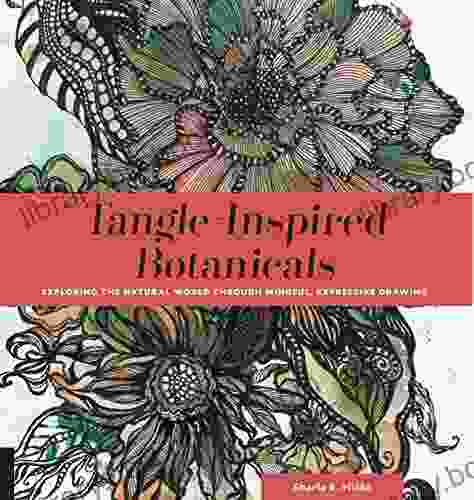
 Brian BellExploring The Natural World Through Mindful Expressive Drawing: A Journey of...
Brian BellExploring The Natural World Through Mindful Expressive Drawing: A Journey of... Felipe BlairFollow ·16.2k
Felipe BlairFollow ·16.2k Pat MitchellFollow ·6.3k
Pat MitchellFollow ·6.3k Jayden CoxFollow ·3.8k
Jayden CoxFollow ·3.8k Harvey BellFollow ·12.9k
Harvey BellFollow ·12.9k Cameron ReedFollow ·13.2k
Cameron ReedFollow ·13.2k Darrell PowellFollow ·15.9k
Darrell PowellFollow ·15.9k Warren BellFollow ·5.9k
Warren BellFollow ·5.9k Reed MitchellFollow ·16.1k
Reed MitchellFollow ·16.1k

 Brian Bell
Brian BellExploring The Natural World Through Mindful Expressive...
Unleash the...
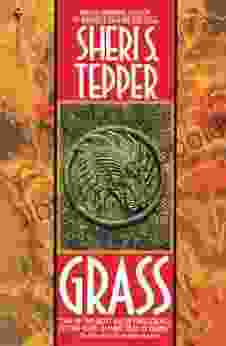
 David Baldacci
David BaldacciJourney into the Enigmatic World of "Grass" by Sheri S....
Prepare to be captivated by "Grass," a...
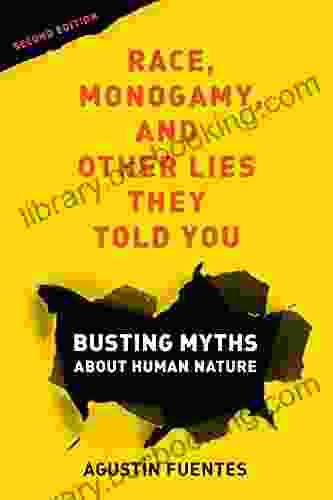
 Dashawn Hayes
Dashawn HayesBusting Myths About Human Nature: Unraveling the Complex...
Challenging the...
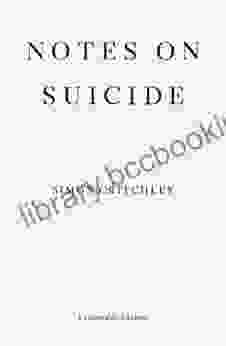
 Ernest Hemingway
Ernest HemingwayNotes on Suicide: A Profound Exploration of the...
Suicide, a taboo subject shrouded in...
5 out of 5
| Language | : | English |
| File size | : | 10699 KB |
| Text-to-Speech | : | Enabled |
| Screen Reader | : | Supported |
| Enhanced typesetting | : | Enabled |
| Word Wise | : | Enabled |
| Print length | : | 240 pages |


